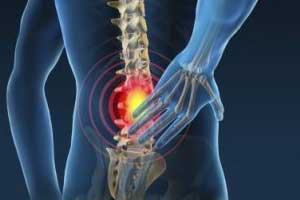- Home
- Editorial
- News
- Practice Guidelines
- Anesthesiology Guidelines
- Cancer Guidelines
- Cardiac Sciences Guidelines
- Critical Care Guidelines
- Dentistry Guidelines
- Dermatology Guidelines
- Diabetes and Endo Guidelines
- Diagnostics Guidelines
- ENT Guidelines
- Featured Practice Guidelines
- Gastroenterology Guidelines
- Geriatrics Guidelines
- Medicine Guidelines
- Nephrology Guidelines
- Neurosciences Guidelines
- Obs and Gynae Guidelines
- Ophthalmology Guidelines
- Orthopaedics Guidelines
- Paediatrics Guidelines
- Psychiatry Guidelines
- Pulmonology Guidelines
- Radiology Guidelines
- Surgery Guidelines
- Urology Guidelines
Self-administered acupressure could help in Lower back pain

Acupressure, a traditional Chinese medicine technique, can improve chronic pain symptoms in the lower back,finds a recent study.The study has bee published in Pain Medicine.
Susan Murphy the lead author of the study says that while acupressure has been previously studied -- and found to be beneficial -- in people with cancer-related or osteoarthritis pain, there are few studies that have examined acupressure in people with back pain.
"Acupressure is similar to acupuncture, but instead of needles, the pressure is applied with a finger, thumb or device to specific points on the body," says Susan Murphy, ScD, OTR, an associate professor of physical medicine and rehabilitation at Michigan Medicine. and
In the study the research team randomly assigned 67 participants with chronic low back pain into three groups: relaxing acupressure, stimulating acupressure or usual care.
"Relaxing acupressure is thought to be effective in reducing insomnia while stimulating acupressure is thought to be effective in fatigue reduction," Murphy says.
Participants in the acupressure groups were trained to administer acupressure on certain points of the body, and spent between 27 and 30 minutes daily, over the course of six weeks, performing the technique.
Participants in the usual care group were asked to continue whatever treatments they were currently receiving from their care providers to manage their back pain and fatigue.
"Compared to the usual care group, we found that people who performed stimulating acupressure experienced pain and fatigue improvement and those that performed relaxing acupressure felt their pain had improved after six weeks," Murphy says.
"We found no differences among the groups in terms of sleep quality or disability after the six weeks."
Potential treatment option
Murphy notes that chronic pain is difficult to manage and people with the condition tend to have additional symptoms such as fatigue, sleep disturbance, and depression.
"Better treatments are needed for chronic pain," Murphy says. "Most treatments offered are medications, which have side effects, and in some cases, may increase the risk of abuse and addiction."
She says this study highlights the benefits of a non-pharmacological treatment option that patients could perform easily on their own and see positive results.
"Although larger studies are needed, acupressure may be a useful pain management strategy given that it is low risk, low cost and easy to administer," Murphy says.
"We also recommend additional studies into the different types of acupressure and how they could more specifically be targeted to patients based on their symptoms."

Disclaimer: This site is primarily intended for healthcare professionals. Any content/information on this website does not replace the advice of medical and/or health professionals and should not be construed as medical/diagnostic advice/endorsement or prescription. Use of this site is subject to our terms of use, privacy policy, advertisement policy. © 2020 Minerva Medical Treatment Pvt Ltd